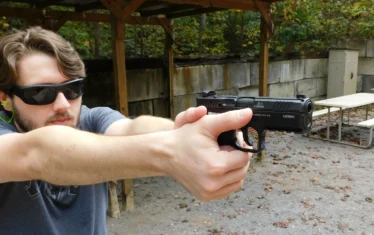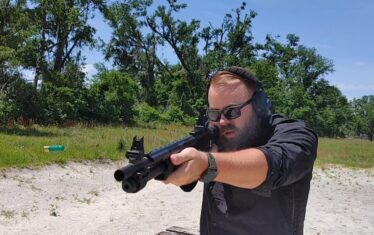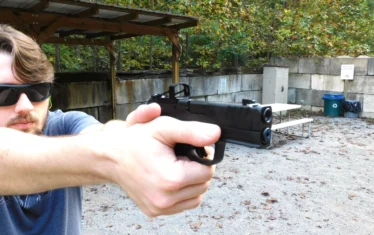When it comes to carrying spare ammo for the shotgun, you don’t have a ton of options, and there are even fewer decent options. As a dedicated shotgun enthusiast, I’ve tried it all. I’ve tried a multitude of rigs designed for home defense, military forces, and competitors. This includes pouches on belts, plate carriers, and shotgun side saddles. One of the better options we have access to is the Safariland TP11 Shot Shell Pouch.
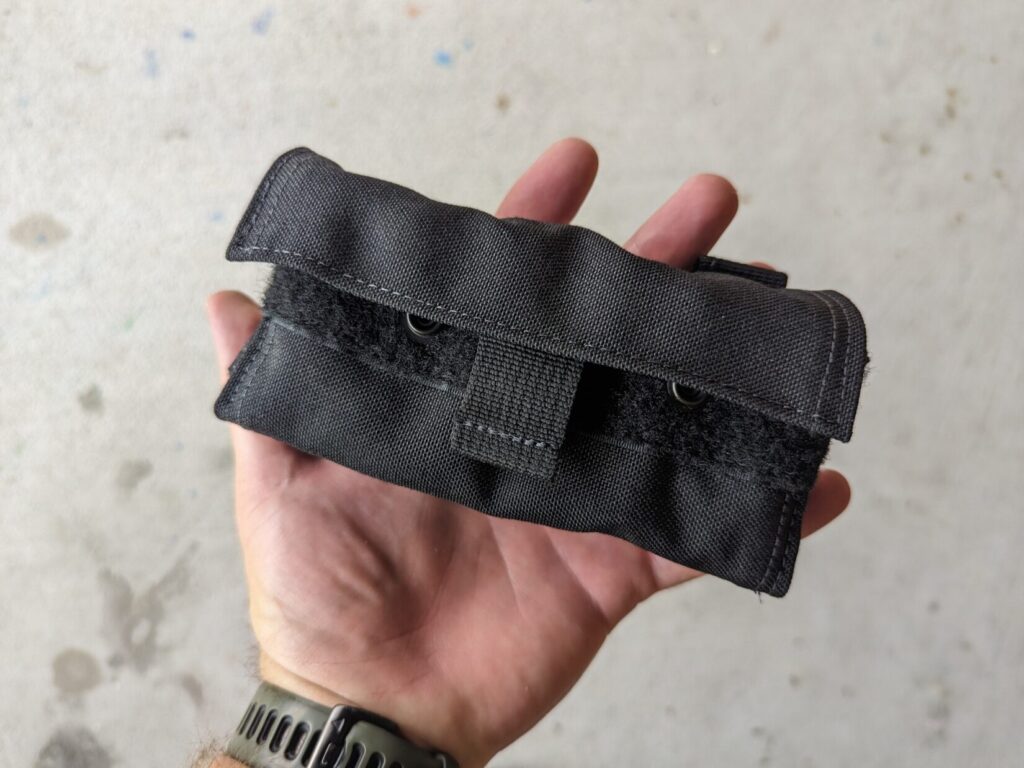
One of the challenges of carrying and using a shotgun is the gun’s capacity and the bulk and weight of the ammo. A 5.56 magazine in a pouch carries 30 rounds of 5.56 in almost no room at all. You can’t do that with a shotgun. You have to be a little more creative, and the Safariland TP11 provides a fairly creative solution. The United States military adopted the TP11.
Breaking Down the TP11
I’m not only a shotgun enthusiast but a historical firearms nerd. Mix the two, and I’ve learned more than my fair share about historical gear and tactics.
What drew me to the TP11 was its resemblance to the 1942 Ammo Pouch Shotgun. This classic piece of web gear held six rounds of 12 gauge ammo and accompanied our boys across Europe and the Pacific to kill the enemies of democracy and peace.
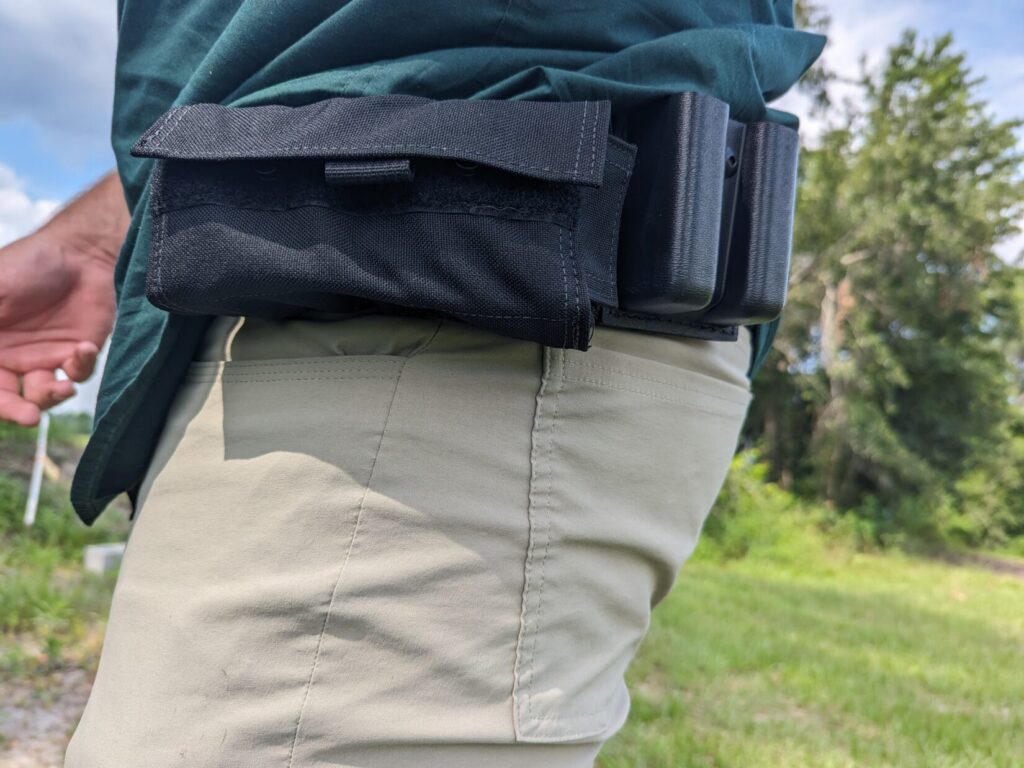
The TP11 has a similar design, although it has been modified a fair bit. Much like the original 1942 pouch, the top of the pouch opens and exposes 12 rounds of 12-gauge ammunition. The big difference is that the pouch is secured together via hook and loop. When grabbed and pressed downward, the entire pouch opens and exposes the 12 rounds of ammo like a panel.
When opened, all twelve rounds are easily accessible, and you can load them as necessary. The TP11 has also been modified to work with MOLLE rather than a web belt from 1942. The MOLLE attachment points are secured via a button and can be used as a belt-mounted pouch when desired.
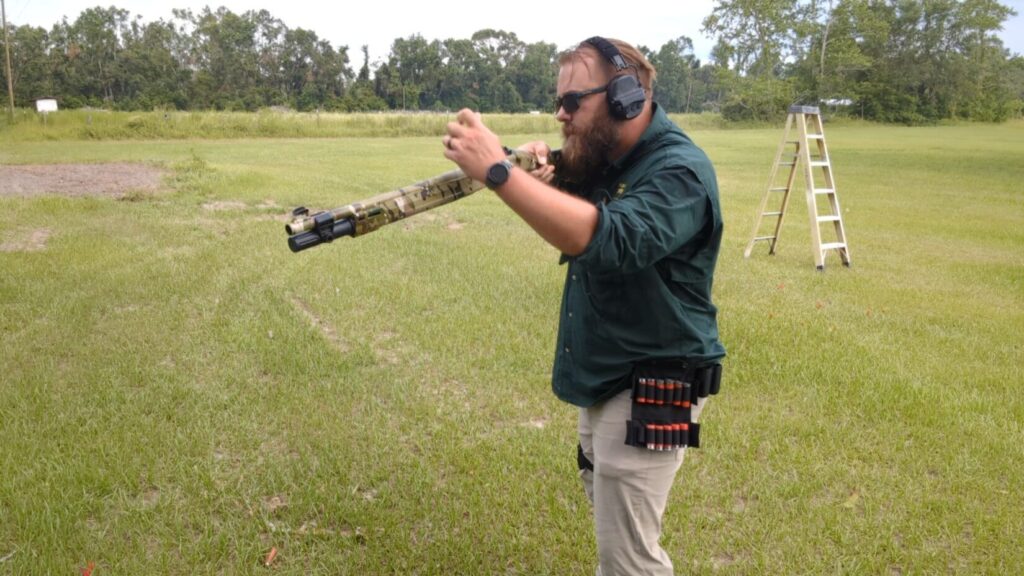
Your shotgun ammo sits inside some very tight elastic bands that secure the shells quite well, but still allow for quick retrieval. It might have its roots in an old-school design, but it’s thoroughly modernized for the modern shotgunner.
I tossed my TP11 on my Bianchi duty belt, grabbed the Beretta A300 Ultima Patrol, and hit the range.
Setting Up the TP11 Shot Shell Pouch
Anytime I’m testing something new, I work some dry fire practice to get a feel for how the gear works. Anytime we have elastic loops and shotgun shells, we have versatility. This versatility means you can run them brass up or brass down.
I experimented with running the kit in every other configuration. I ran both sides up, both sides down, one side up, and one side down.

There are two good ways to run shotgun shells with the TP11. The first method has the brass facing entirely upward when the pouch is closed. When the pouch opens and splits into a platform, the outside shells appear upside down. This alternating method allows for the quickest draw possible.
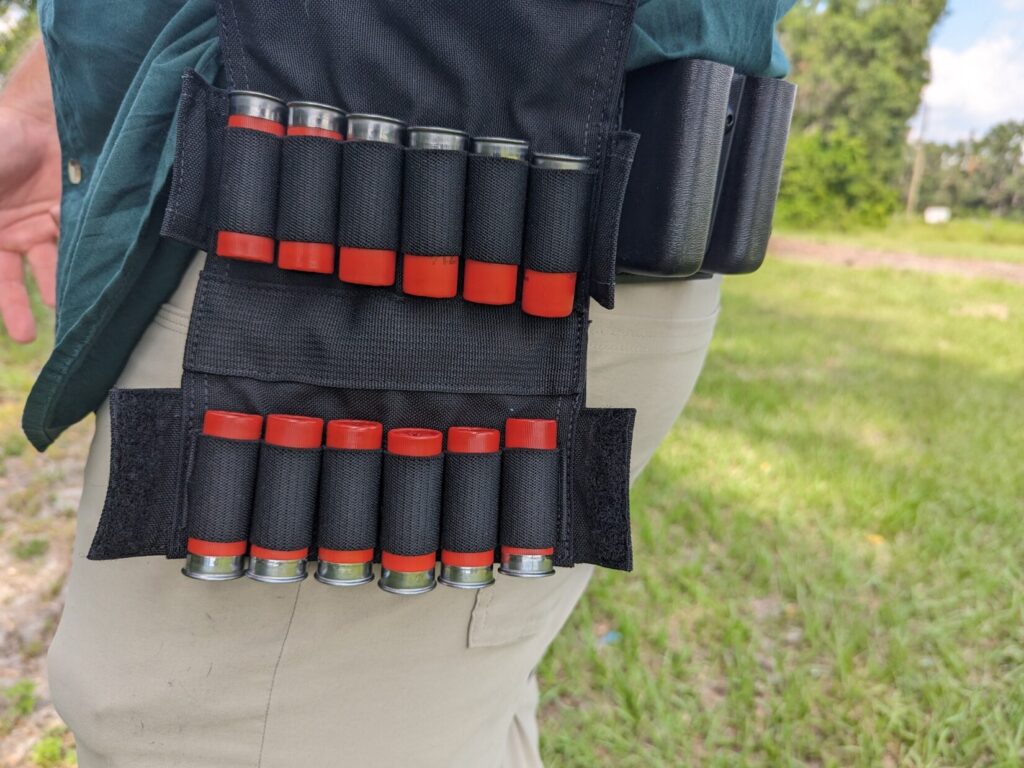
The downward-facing shells are pulled downward and escape cleanly and quickly. The top-facing shells allow for a traditional pull. When the pouch is closed, the brass-up design makes it easy to access and draw all of the rounds. The downside to this method is having to learn and master two different draw strokes to draw the shells.
The Other Way
The other setup is the opposite. When the panel is folded, the shells that were furthest from the body are upside down. This makes them inaccessible. When you open the tab, the shells all face brass up. This ensures total and complete retention, and nothing can slip out and downward.
You only need to learn one draw with this technique, but the bottom of the panel seems to be slower to draw from.
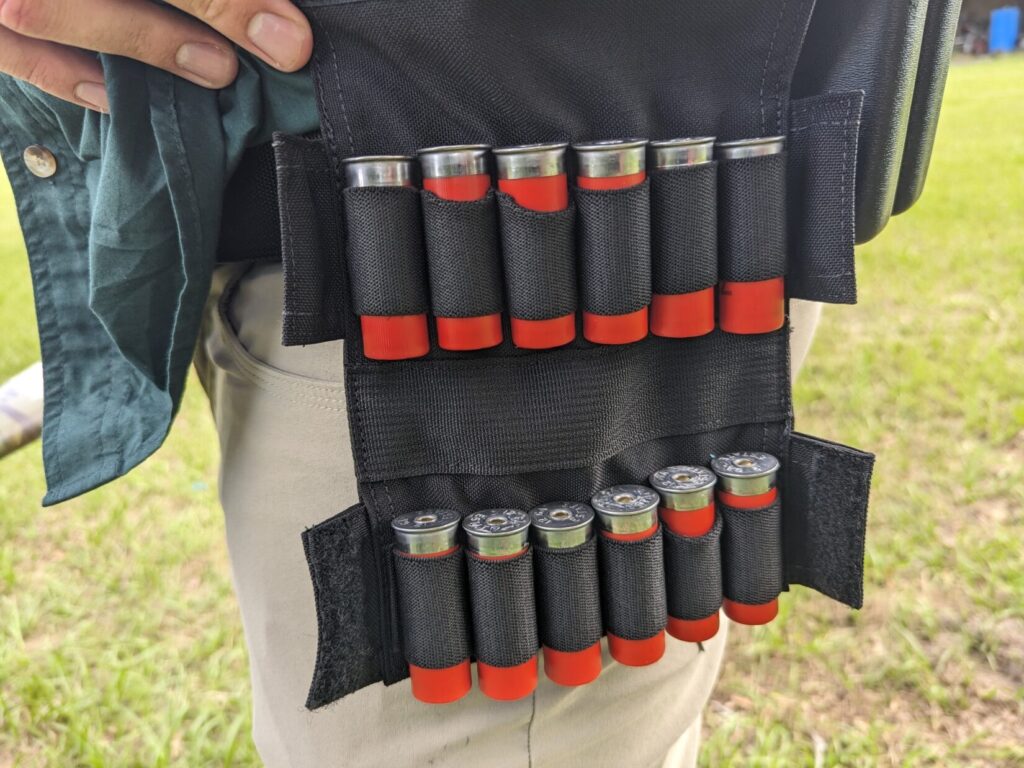
The TP11 can also be loaded with various shotgun shells. This includes buckshot on one row and slugs on another. Maybe breachers will carry breaching loads on one tab and buckshot on the other. The TP11 offers you plenty of options, and the shotgun is a thinking man’s weapon, so get to thinking.
Putting In Work with the TP11 Shot Shell Pouch
With the A300 Ultima Patrol, the TP11, and a few hundred rounds of shotgun ammo, I hit the range and worked a variety of drills. This includes the shotgun El Pres which means three emergency reloads. I also worked simple shoot-two, load-two drills, and some basic port and tube loads.
Working with the TP11 takes some practice. It’s not as quick and easy as a dedicated competition tool. It takes some practice to learn how to orient your hand, and how to retrieve rounds efficiently.
My preferred method to use the TP11 is the alternating design. With a pointer finger and thumb grip I could retrieve one or two rounds at a time and balance them for a quick plus two to the tube.
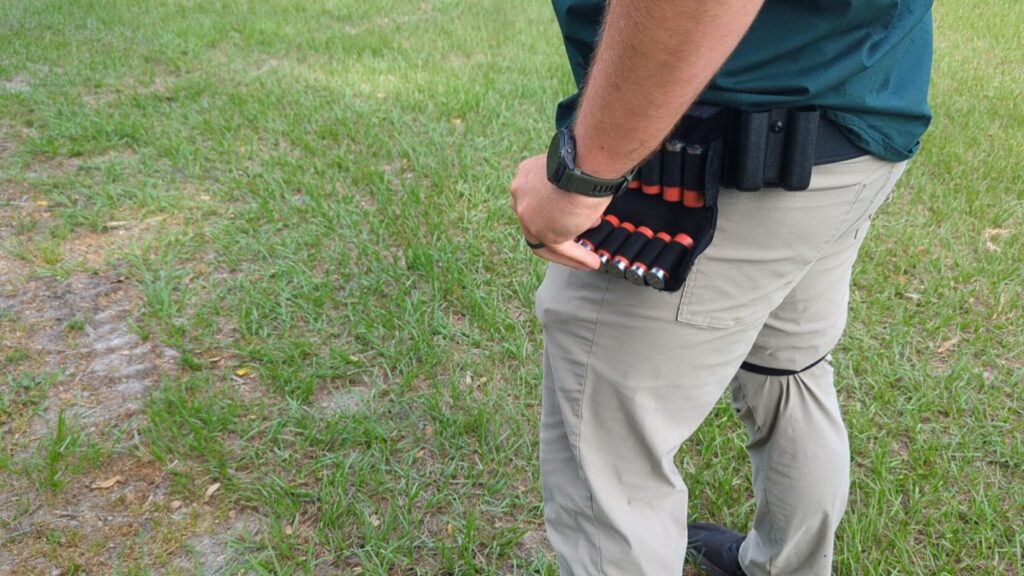
With the rounds facing downward, I pushed the rims into my palm and pulled them downward. This made it easy to work with gravity to free shells very quickly but did require a slight reorientation of the shells to get them into the gun. It is slower than a side saddle but still competent and quick enough to use when needed.
Going Hard

The TP11 fills the dedicated duty gear role that calls for increased retention and slower dedicated loads for combat shotguns. This isn’t a 3-gun caddy designed for violin reloads. It’s easy to get wrapped up in shotgun reloads, but shotguns rarely have to be reloaded. At the range they function, they tend to be well-suited for one-shot stops, and they aren’t weapons used to suppress the enemy.
The TP11 is fast enough, and the increased retention, intuitive design, and ability to fit it on a belt or MOLLE platform make it more appropriate for the duty role.
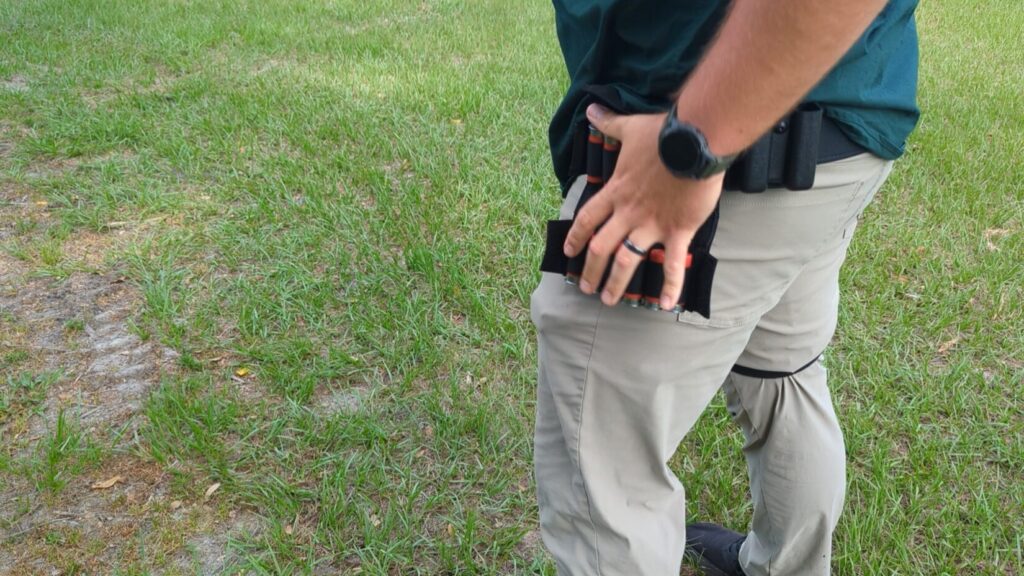
The Shotgun Taco
My youngest kiddo said it looks like a taco, and much like tacos, I can’t get enough of them. The TP11 provides a duty-ready option to give 12 extra rounds. For a lot of shotguns, that’s two full tube reloads. For a shotgunner, 12 rounds is a lot, and I could carry three with ease on my duty belt. That’s a lot of shotgun ammo.
The TP11 Shot Shell Pouch is a hidden gem from Safariland and an excellent option for a duty shotgun.






